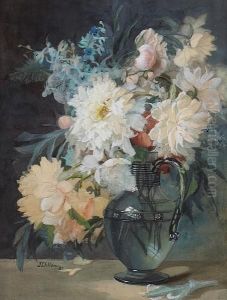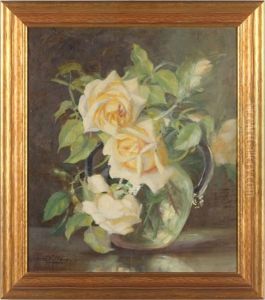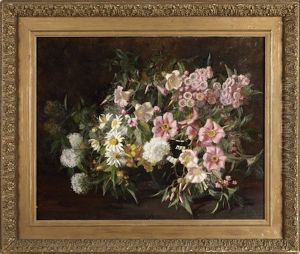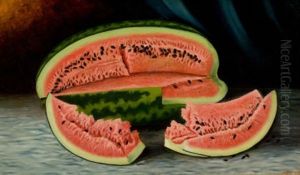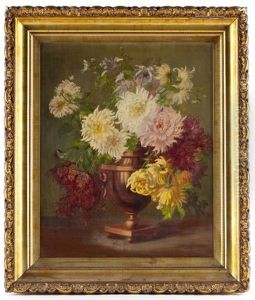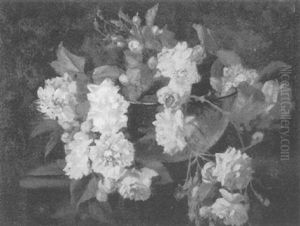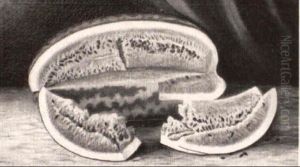Julia Mcentee Dillon Paintings
Julia McEntee Dillon was an American painter born on April 4, 1857, in New York City. She came from an artistic family; her father was a portrait painter and her mother was a cousin of the famous American poet Emily Dickinson. Dillon's early exposure to the arts greatly influenced her decision to pursue a career as an artist.
Dillon studied at the Cooper Union School of Design for Women in New York City, which was one of the few places offering professional art education to women at the time. She later continued her studies in Paris at the Académie Julian, a popular art school among American and international students. There, she had the opportunity to learn from renowned artists such as William-Adolphe Bouguereau and Tony Robert-Fleury.
Upon returning to the United States, Dillon became part of the vibrant New York City art scene. She was particularly known for her miniatures, landscapes, and floral still lifes. Her work was characterized by a delicate touch and a refined sense of color, which earned her a reputation as a skilled painter. Dillon exhibited her work at various institutions including the National Academy of Design and the Pennsylvania Academy of the Fine Arts.
Apart from her achievements in art, Dillon was also an advocate for women's rights and art education. She was a member of the Woman's Art Club of New York, an organization that aimed to support female artists in an era when the art world was predominantly male-dominated. Dillon also taught art, passing on her knowledge and skills to the next generation of artists.
Julia McEntee Dillon's contribution to the art world did not go unnoticed. She received numerous awards throughout her career, including a bronze medal at the 1901 Pan-American Exposition in Buffalo, New York. Her paintings are part of various collections, including those of the Metropolitan Museum of Art.
Dillon continued to paint and exhibit her work until her later years. She passed away on March 3, 1934, in New York City, leaving behind a legacy as a pioneering female artist in the late 19th and early 20th centuries. Her life's work not only showcased her talent but also paved the way for future generations of women in the arts.
